Junior Moreno's Performance For Venezuela vs Argentina Shows His Value
Junior Moreno's Performance For Venezuela vs Argentina Shows His Value
With Venezuela finishing dead last in CONMEBOL’s World Cup qualifiers, it was clear they needed a rebuild. Enter Júnior Moreno.
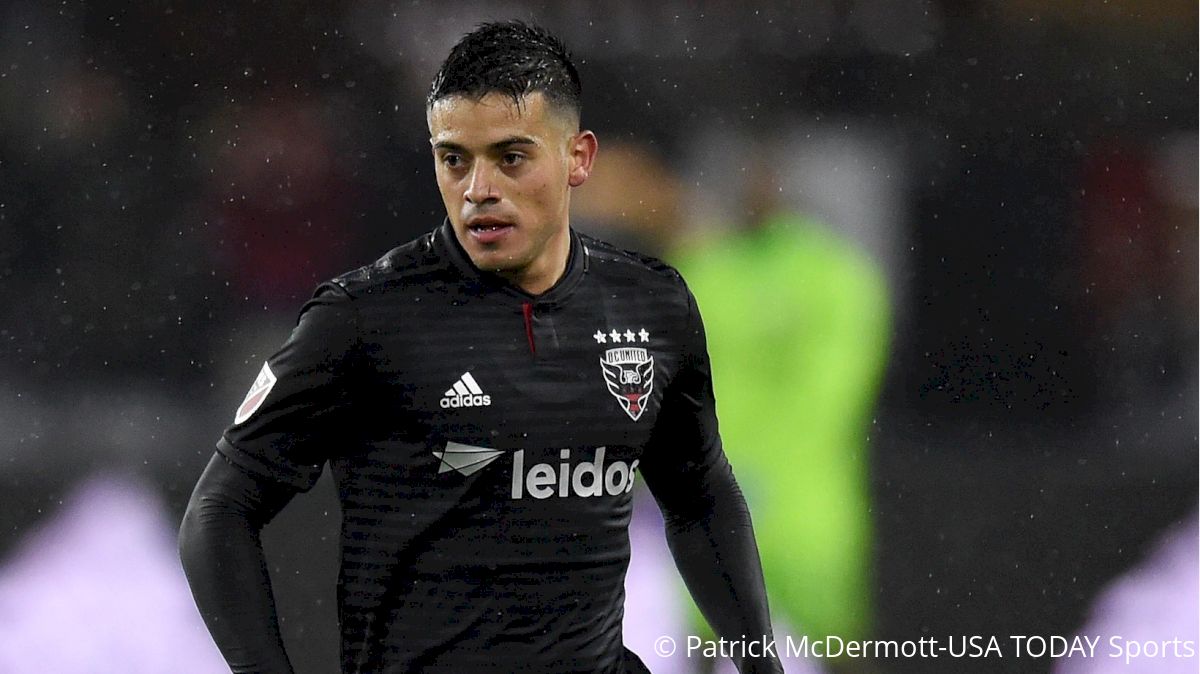
With Venezuela finishing dead last in CONMEBOL’s World Cup qualifiers, it was clear they needed a rebuild, an overhaul that gave precedence to younger, talented players.
Enter Júnior Moreno.
Moreno, then at Maracaibo-based club Zulia, was given his first shot at the Venezuela first team in the June 2017 friendlies. He started both matches, playing 83 minutes against the United States and scoring a cracker of the goal from 25 yards out against Ecuador. While his future teammates, such as Wuilker Faríñez and Yeferson Soteldo, were leading Venezuela to the U20 World Cup Final that same month, Moreno was doing his country proud, giving them a glimpse of a promising future.
He was rewarded with starts in World Cup qualifiers against Argentina and Uruguay. Venezuela had already been eliminated from contention, but Moreno, alongside the likes of Sergio Córdova and Yangel Herrera, was the emblem of a new, exciting generation.
His performances were good enough for D.C. United to take a gamble on him, with the club signing him for an undisclosed fee in January 2018.
Moreno started off his career slow but steady, starting the first three games with Russell Canouse sidelined with a knee injury. However, with the Venezuelan picking up niggling injuries, and with homegrown talent Chris Durkin impressing in a holding midfield role, he found playing time hard to come by. He went nearly two months without starting a single game, until July 28, when he started alongside Canouse against the Colorado Rapids.
Thus began a promising end to the season, which coincided with D.C.’s heroic home stretch. Moreno wasn’t on the pitch for D.C.’s unforgettable last-gasp victory against Orlando, which triggered the hot streak, but he started the next five matches, including an impressive win against eventual champions Atlanta United. From the 4-1 victory over Portland up until the very end of the season, the only games Moreno didn’t start were when he was on duty for Venezuela.
In the new, post-World Cup cycle, Moreno has started six out of six matches for Venezuela, but his most impressive performance came last week against an Argentina side containing a midfield of Giovani Lo Celso and Leonardo Paredes, as well as Lionel Messi.
Marking/Spatial Awareness
As any South American team knows: stop Messi, and you stop Argentina. Here, as Lo Celso attempts to find Messi between the lines, Moreno retreats and blocks any passing angle into Messi, alongside Herrera, who joins him in double coverage. While Rafael Dudamel’s side were focused in pressing Argentina high and attempting to win the ball back in dangerous zones, Moreno stuck with Messi.

While also shifting laterally to pick up runs from Lautaro Martínez, Moreno often stayed deep, marking Messi out of the game. However, when Messi was already being marked by someone else (usually Herrera), Moreno scanned the pitch, looking to maintain compactness in the midfield and picking up extra runners. Here, he pushes forward to pick up Lo Celso, who retreats to receive from deep, yet can only muster a back pass.

Dudamel utilized Moreno’s stamina and positional awareness to charge him with directing the midfield’s off-the-ball structure. However, with La Vinotinto preferring to play directly from defenders into forwards, Moreno did not have a huge role in build-up early on, often only retreating for an emergency passing option. Hence, the majority of his passes in the opening stages tended to be back passes or sideways passes, and when Venezuela tried to build out of the back with a more measured approach, using Moreno as the orchestrator, they were often nullified by Argentina’s pressure.

Moreno was involved in two early collisions with Lautaro and Nicolás Tagliafico, both of which were clean and hence not punished.
To alleviate pressure, Moreno drops in between center backs Mikel Villanueva and Yordan Osorio to receive, before spreading it wide to an open Villanueva, who finds target man Salomón Rondón with a long ball.

With Moreno stuck to Messi like glue, Argentina would often try to free up space for their talisman with third-man runs from Tagliafico, which Moreno would pick up, but Messi would end up finding himself with nowhere to go after one of the midfielders (usually Herrera) switched roles.
Moreno often sat deep, waiting to stop the run with a tackle, while another midfielder, usually Tomás Rincón, pushed up aggressively, attempting to cut out an angle and force a hurried pass. Sometimes, even double-marking wasn’t enough, with Messi dancing past the midfield and setting up Lautaro with a textbook cross, only to be met by a point-blank save from Wuilker.
Apart from his excellent positional discipline, Moreno’s work-rate shouldn’t be overlooked either. Whenever there was a cross or threatening dribble into the wing, Moreno launched himself into the box, attempting to stop a dangerous play. Here, he finds himself in the edge of the box, close to Messi, and clears a mistimed pass from Tagliafico.

Moreno constantly plugged up spaces and cleaned up errant crosses or clumsy passes, blending his positional awareness and quick reactions.
After Rondón’s opening goal, Venezuela’s second major chance came thanks to Moreno’s proactive decision-making and discipline. Moreno was stuck in the middle of Herrera and Rincón, plugging up space and scanning for runners. As Argentina attempted to break the lines from defense into midfield, Rincón initially stuck close to Messi, but he retreated to pick up Lo Celso, who dropped deep.

As Paredes played the pass to an open Messi, Moreno was already sprinting towards him, and when Messi took a heavy touch and slipped, Moreno was right there to “retrieve the fumble.” He passed it short to the onrushing Jhon Murillo, who sliced through the defense with a lovely through ball into Darwin Machís. Machís received the ball on the edge of the box with a cozy touch, but his effort was blocked by Franco Armani, who spread out to deny him.
On the ball, Moreno had nothing to write home about, but off the ball, he was a defensive playmaker, constantly capitalizing on or creating mistakes from Argentina and attempting to turn them into goals. With the midfielder positioned between Lo Celso and Messi, he stuck his foot in to deflect Lo Celso’s attempted one-touch pass to Messi. Rincón received and immediately played it to Rondón, but the Newcastle striker was rejected by an expert slide tackle from Gabriel Mercado.

Such was the proactive nature of Venezuela that their second goal was created by it. After Rincón was fouled, Roberto Rosales quickly played it to Murillo, who cut in and fired a beautiful shot past Armani.
Moreno has evolved into one of the rising stars of both CONMEBOL and MLS thanks to his dogged determination and never-say-die spirit. In the play pictured below, he lost possession after dribbling into a sea of Albiceleste players, but he immediately pressed to win back the ball, before retreating and winning back possession from the man who dispossessed him: Messi.

The thing about Messi is, no matter how hard you try to stop him, he’ll still find a way to exploit your weaknesses. Against Venezuela alone, he managed to set up three clear-cut scoring opportunities, as well as testing Wuilker from long range with a good shot. Even when he’s not on his game, he’ll still try to make you pay.
Moreno allowed Messi to drop deep and receive, preferring to stay back and pick up dangerous runs. As previously stated, he was the sweeper of the midfield, allowing Rincón to be the aggressor. If Rincón failed to tackle the player and win back possession, Moreno was there to block the angle and step in, ending the dribble. In the play pictured below, he crouched and waited for Domingos Blanco to dribble into him, blocking any possible route into the box. When Blanco slipped, Rincón was there to pick it up.
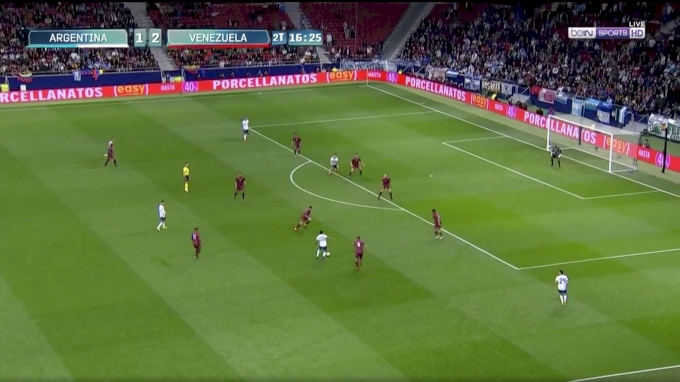
Most of what Moreno did against Argentina was in his positioning, not his tackling or passing, but positioning. He rarely touched the ball on either phase of the game, but he effectively maintained Venezuela’s solidity in midfield with his expert positioning.
Whenever Messi attempted to make a run from the half-spaces into the box, Moreno left the central area and picked up his run. Perhaps Moreno’s most common action was blocking crosses; he constantly found himself on the edge of the box or the edge of the penalty spot, clearing errant crosses. But he also managed to nullify potential shots with his expert positioning, closing down space and forcing the would-be shooter to pass or dribble.
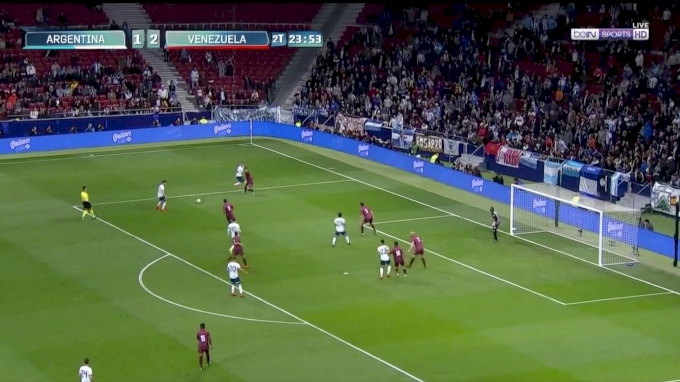
Moreno rarely received between the lines, but when he did, he tended to lay it off with a quick back pass. However, he managed to create chances with his quick thinking and wise decision-making. In this play, Osorio gave a short pass to Moreno, who dribbled up the wing, passed it to Machís, and then continued his run, receiving a quick one-two. Walter Kannemann tried to slide in, but Moreno beat him for pace.

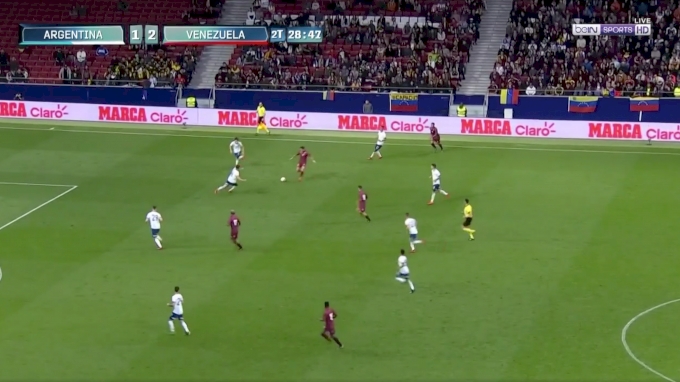
Moreno beat Kannemann for pace and gave it to Soteldo with a deft touch, and Soteldo found Josef Martínez in the box with a lovely ball. Juan Foyth bundled in to Martínez, and Venezuela won a penalty. The Atlanta United striker converted, padding Venezuela’s lead against a beleaguered Argentina side.
Perhaps Moreno didn’t have any Hollywood passes or stunning tackles, but he was vital to his team’s structure, picking up runners, stopping dribbles with deft tackles and great positioning, and maintaining Venezuela’s focus throughout the match.
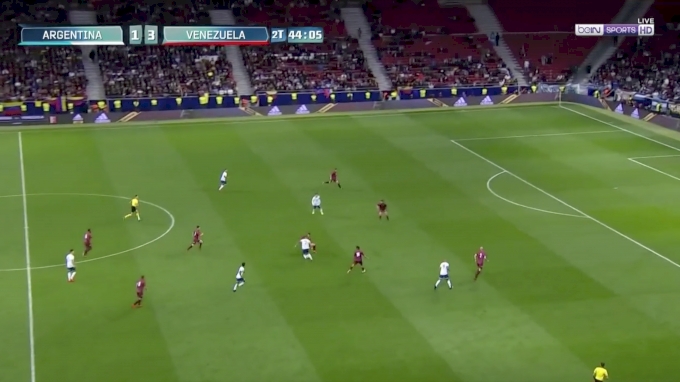
Against Argentina, we caught a glimpse of why Moreno has started each of D.C. United’s games this season over Durkin. He’s not in the ilk of Xabi Alonso or Jorginho, but his expert positioning, constant awareness, and nonstop work rate give his teams a stability that cannot be underestimated.
Zach is a lifelong D.C. United fan and the creator of BreakingTheLines.com. Follow him on Twitter.
Related Content
 How to Watch: 2024 Smith College vs Springfield - Women's | Soccer
How to Watch: 2024 Smith College vs Springfield - Women's | SoccerMar 14, 2024
 How to Watch: 2024 Mount Holyoke College vs W.P.I. - Women's | Soccer
How to Watch: 2024 Mount Holyoke College vs W.P.I. - Women's | SoccerMar 14, 2024
![How to Watch: 2024 Salve Regina vs Wellesley College[a] - Women's | Soccer](https://d2779tscntxxsw.cloudfront.net/5d1b91f16a42a.png?width=400&quality=80) How to Watch: 2024 Salve Regina vs Wellesley College[a] - Women's | Soccer
How to Watch: 2024 Salve Regina vs Wellesley College[a] - Women's | SoccerMar 14, 2024
 How to Watch: 2024 Emerson College vs M.I.T. - Women's | Soccer
How to Watch: 2024 Emerson College vs M.I.T. - Women's | SoccerMar 14, 2024
![How to Watch: 2024 Wellesley College[a] vs M.I.T. - Women's | Soccer](https://d2779tscntxxsw.cloudfront.net/5d1b91f16a42a.png?width=400&quality=80) How to Watch: 2024 Wellesley College[a] vs M.I.T. - Women's | Soccer
How to Watch: 2024 Wellesley College[a] vs M.I.T. - Women's | SoccerMar 14, 2024
 How to Watch: 2024 Babson College vs Clark - Women's | Soccer
How to Watch: 2024 Babson College vs Clark - Women's | SoccerMar 14, 2024
 How to Watch: 2024 Springfield vs Babson College - Women's | Soccer
How to Watch: 2024 Springfield vs Babson College - Women's | SoccerMar 14, 2024
 How to Watch: 2024 W.P.I. vs Emerson College - Women's | Soccer
How to Watch: 2024 W.P.I. vs Emerson College - Women's | SoccerMar 14, 2024
 How to Watch: 2024 Smith College vs Mount Holyoke College - Women's | Soccer
How to Watch: 2024 Smith College vs Mount Holyoke College - Women's | SoccerMar 14, 2024
